Abstract
The major aspects that must be considered in studies of the health effects of environmental pollutants are: the direct damage due to the exposure, the role of pre-existing disease, and effects of the exposure on the response to secondary stresses. In experimental studies at concentrations of air pollutants found in urban environments frank toxicological responses are rarely observed. However, exposure to a secondary stress, i.e. respiratory challenge with infectious bacteria, can exacerbate the response of the experimental host. Changes in the resistance to respiratory infections provide a highly sensitive experimental animal model system, which is increasingly used in studies of health effects of air pollutants. This model indicates the impairment of the basic defense mechanisms of the respiratory system by the combined exposure to low concentrations of pollutants and the superimposed bacterial infection. Changes in the resistance to respiratory infections were studied in various species of laboratory animals. S. pyogenes and K. pneumoniae are the bacteria of choice to induce the pulmonary infection. Included in the studies are short-term single and multiple exposures as well as long-term exposures to gaseous pollutants such as O3 and NO2 and particulate pollutants such as sulfates and nitrates. Changes in the resistance are measured as excess mortalities and reduced survival time as compared to those in infected animals not exposed to the pollutants. Other parameters measured ranged from changes in the immune response to changes in retention rates of bacteria in lungs.
Full text
PDF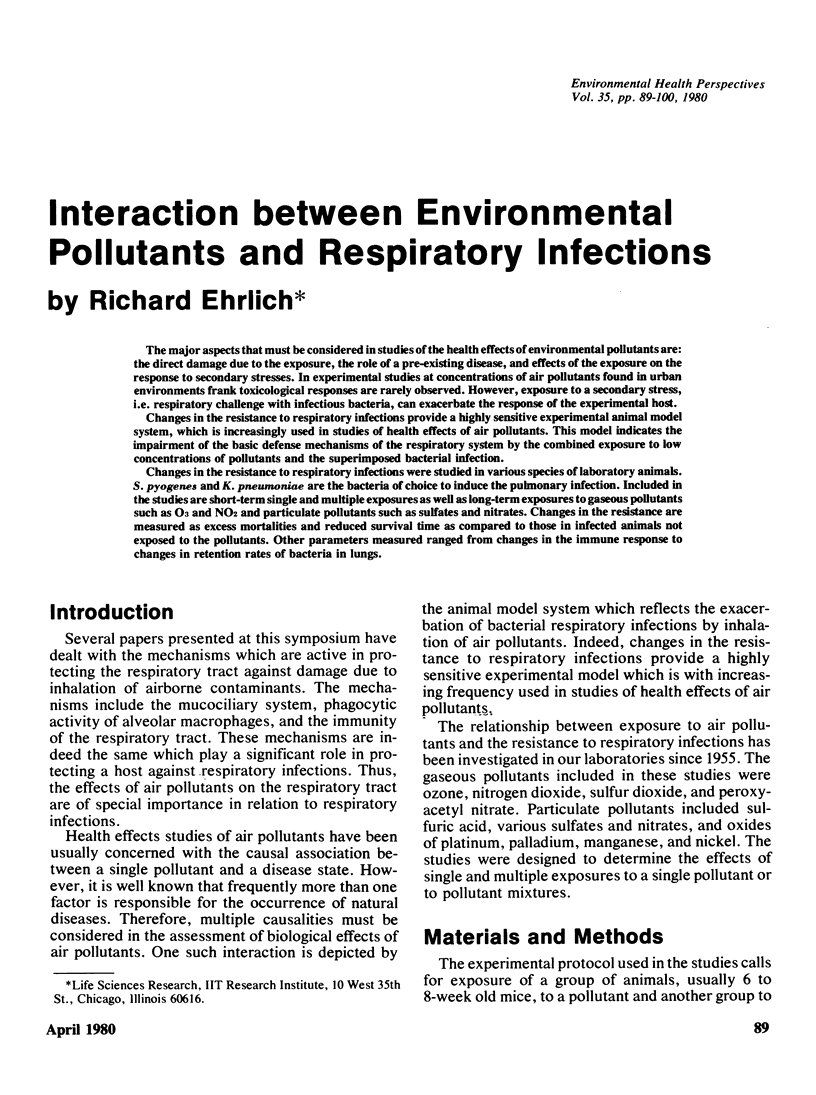
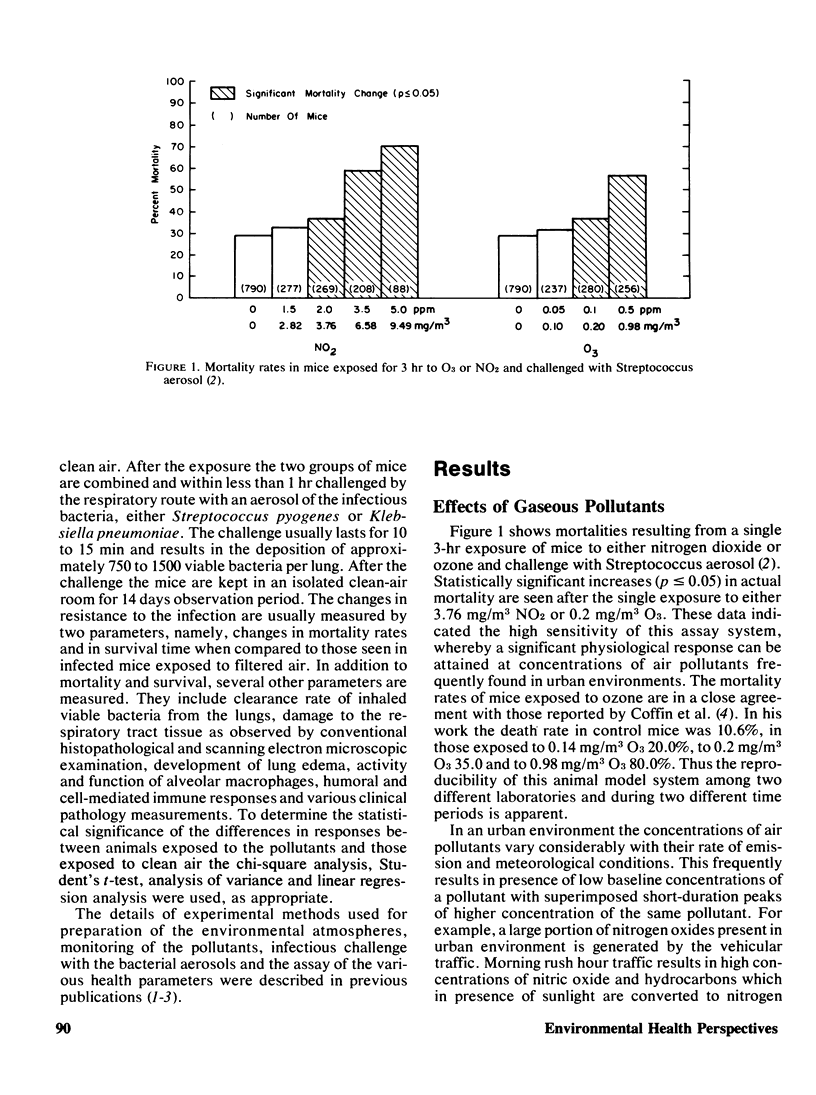
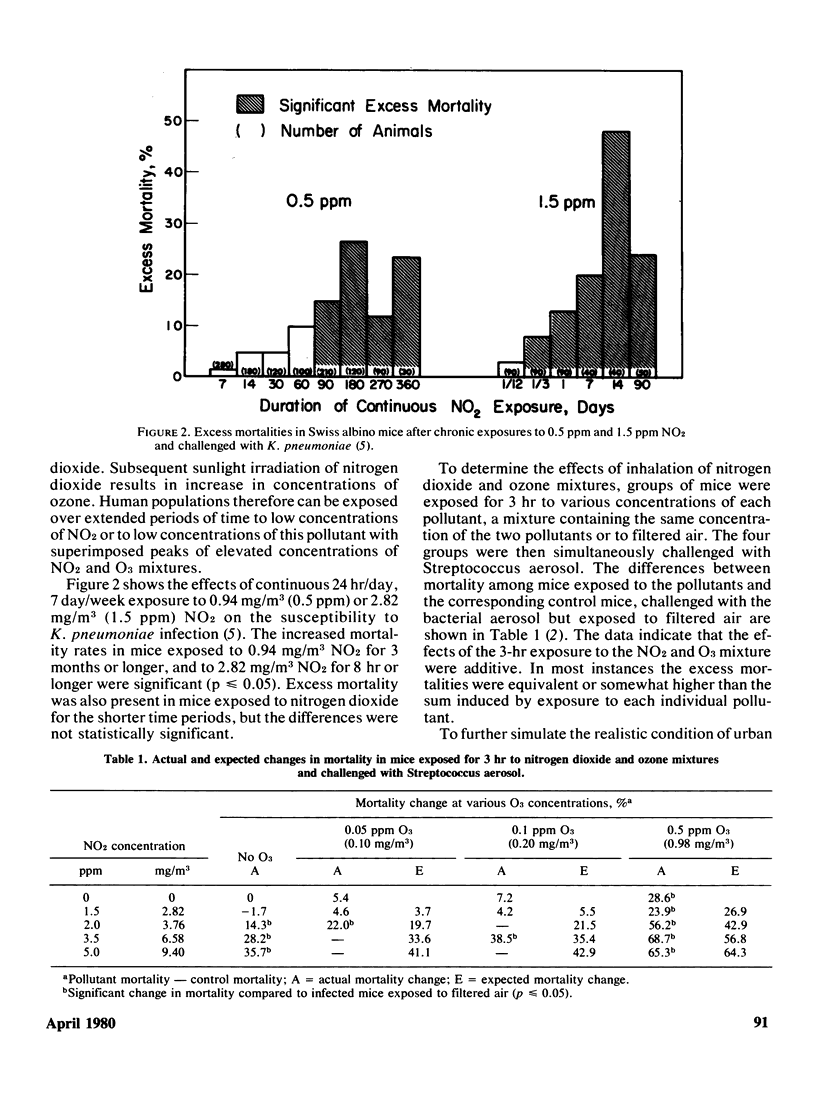
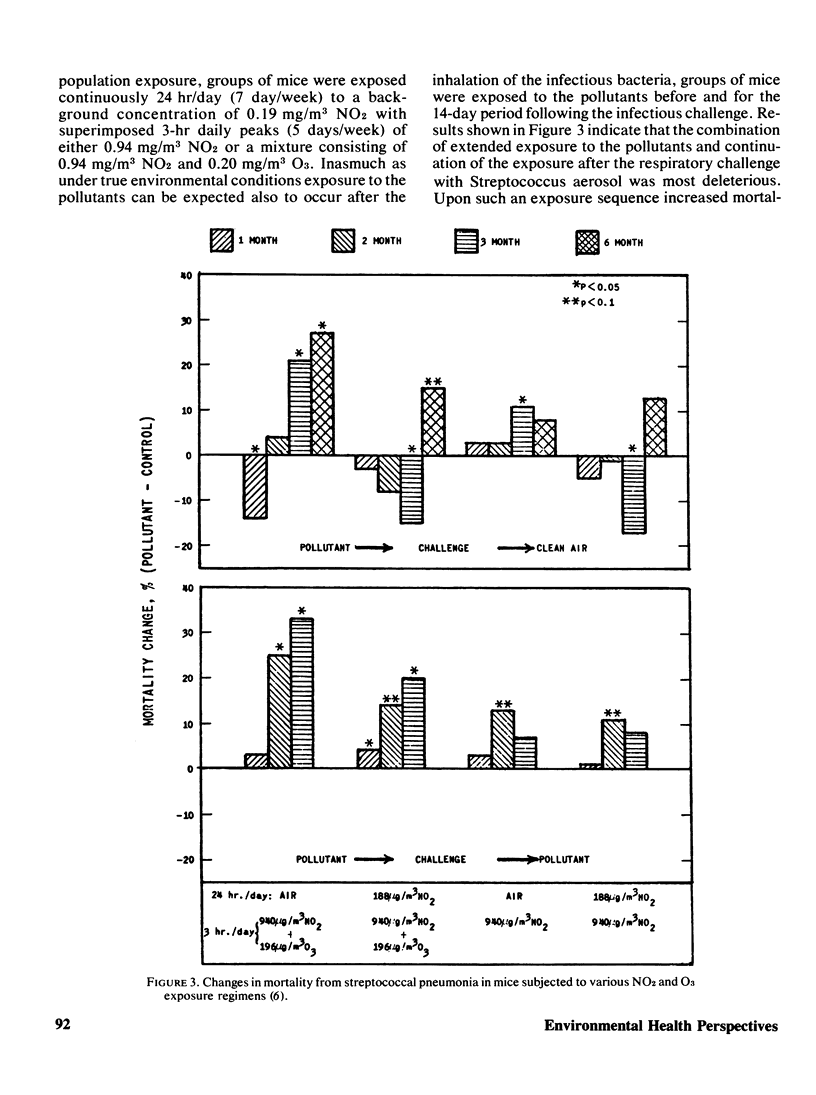
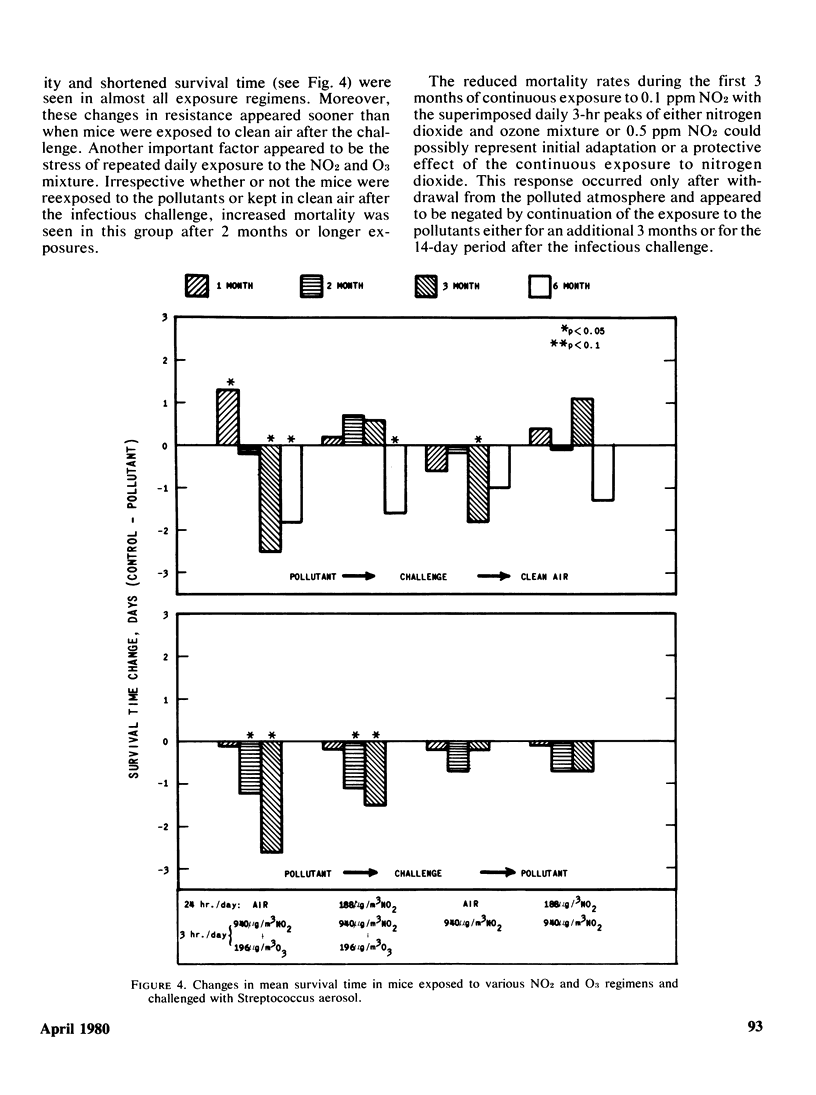
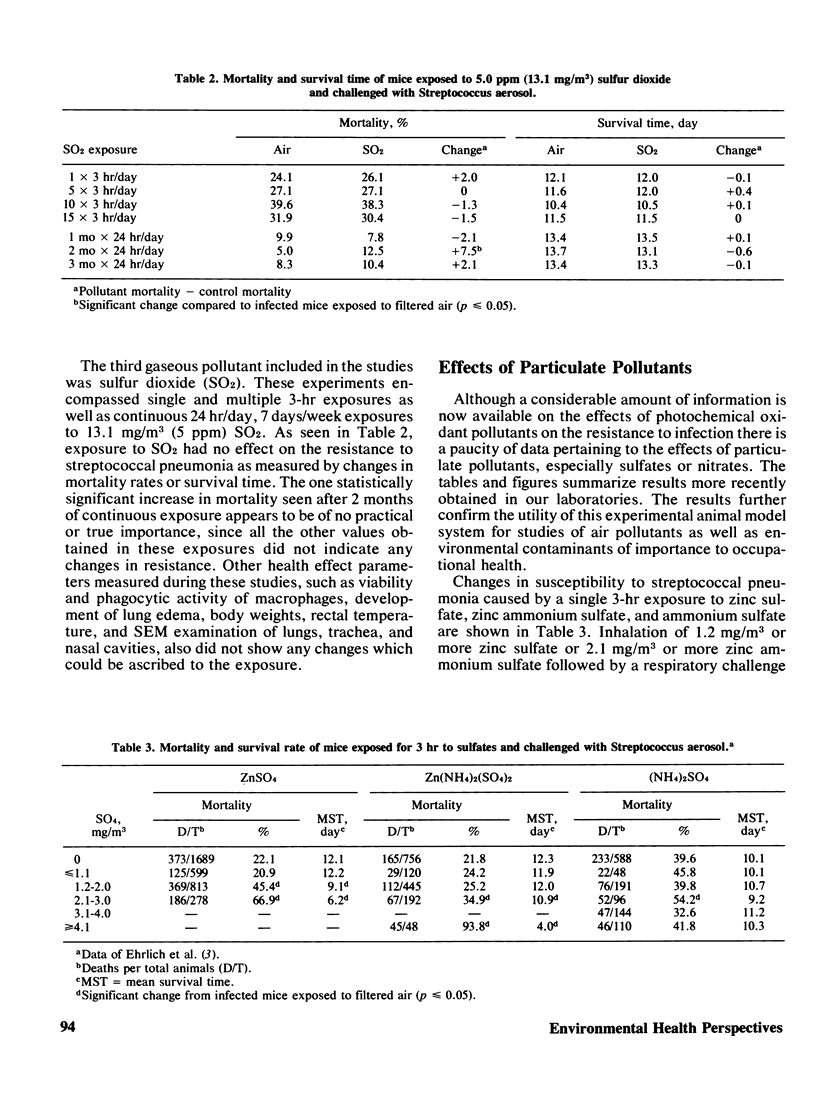
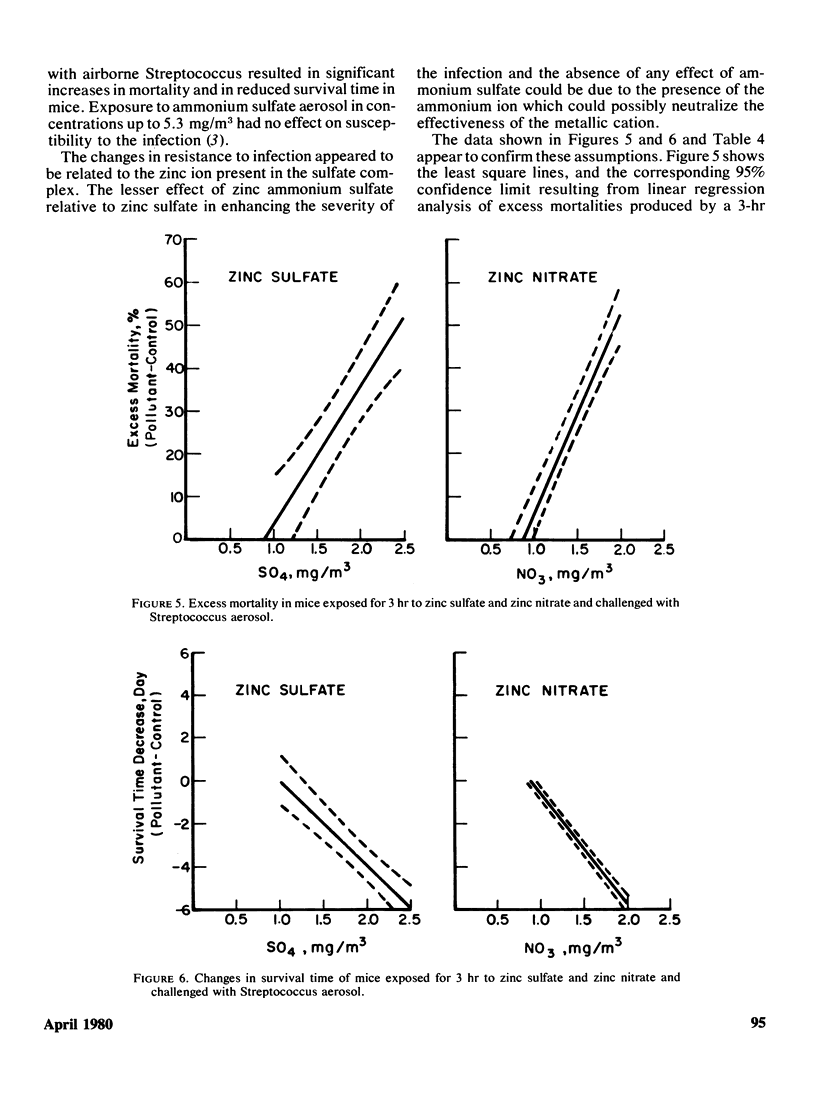
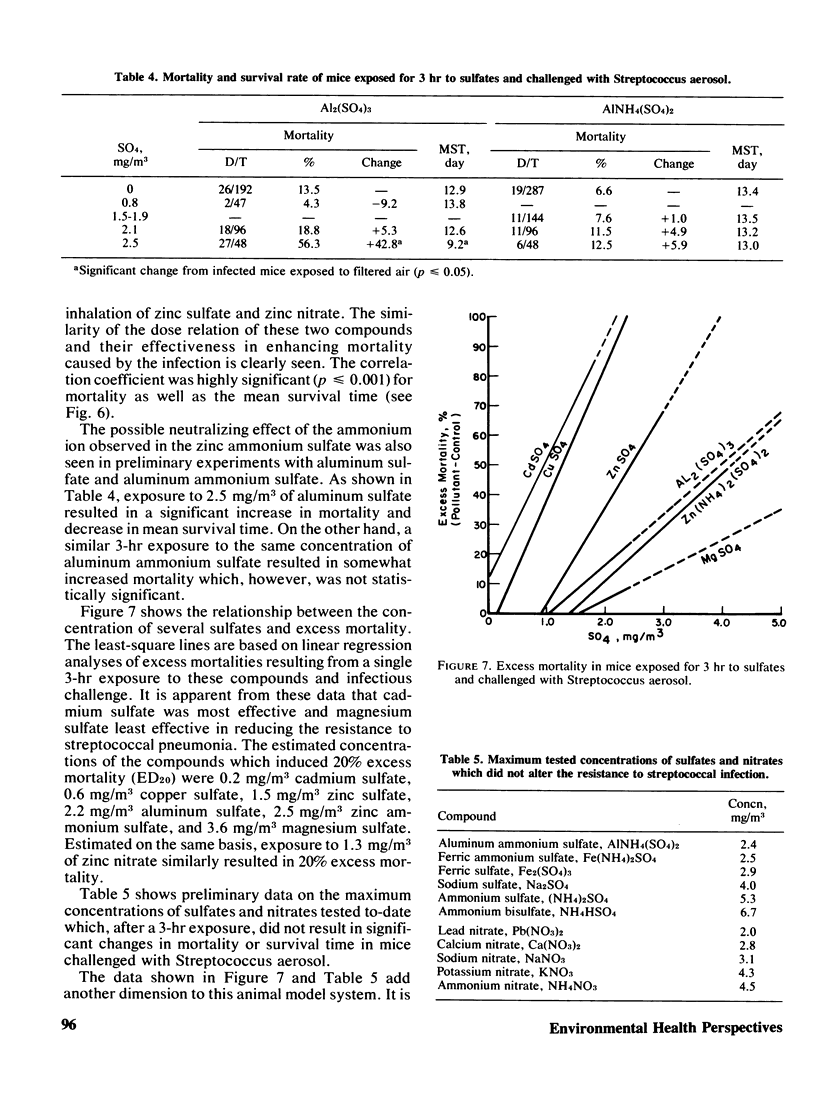
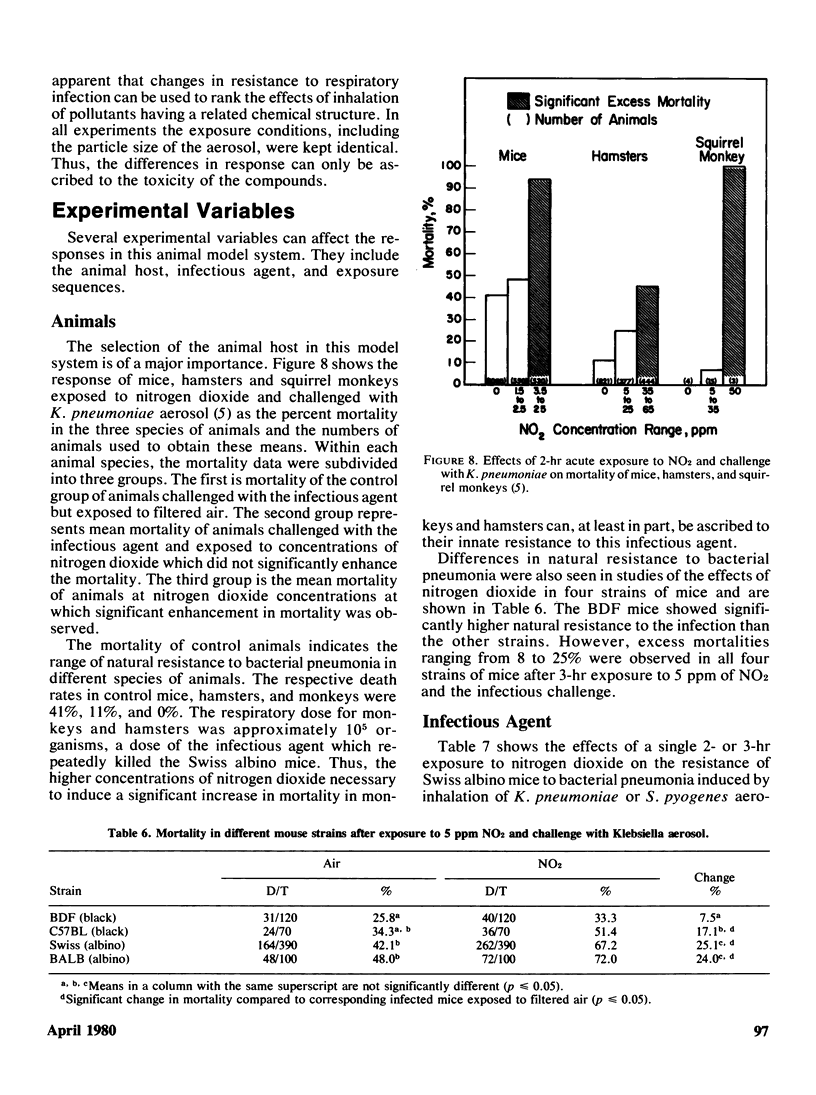
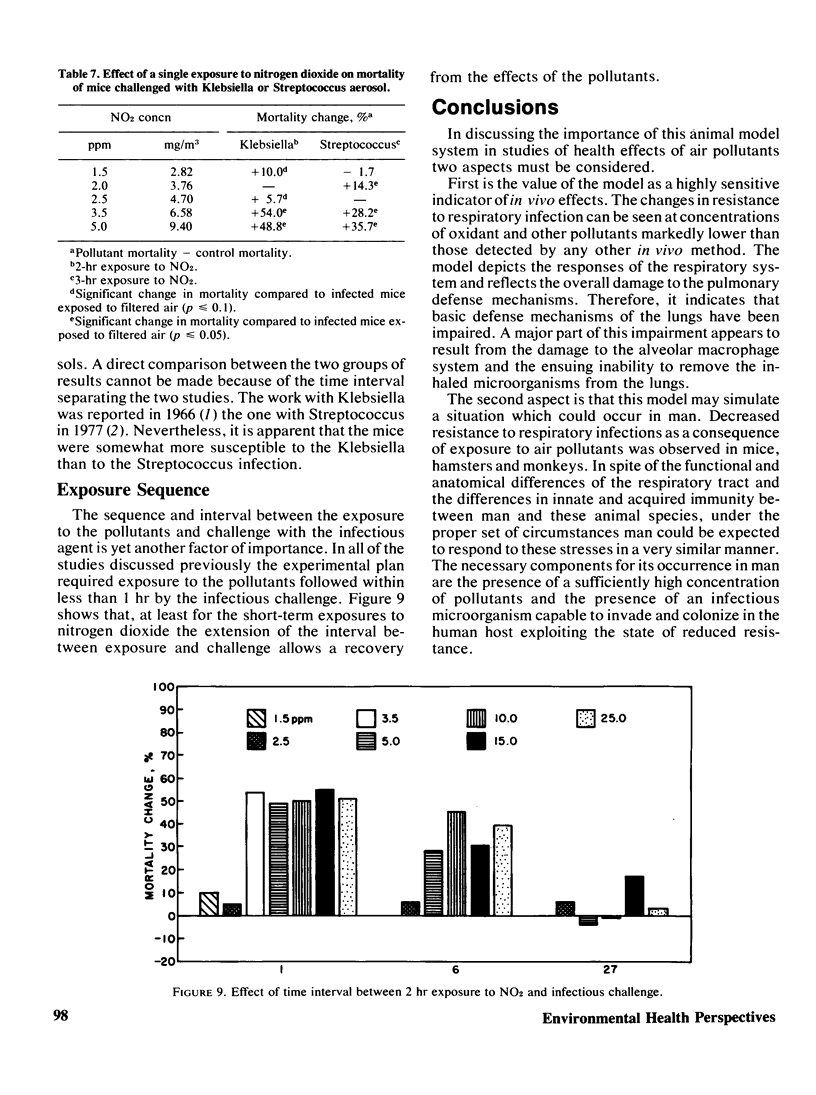
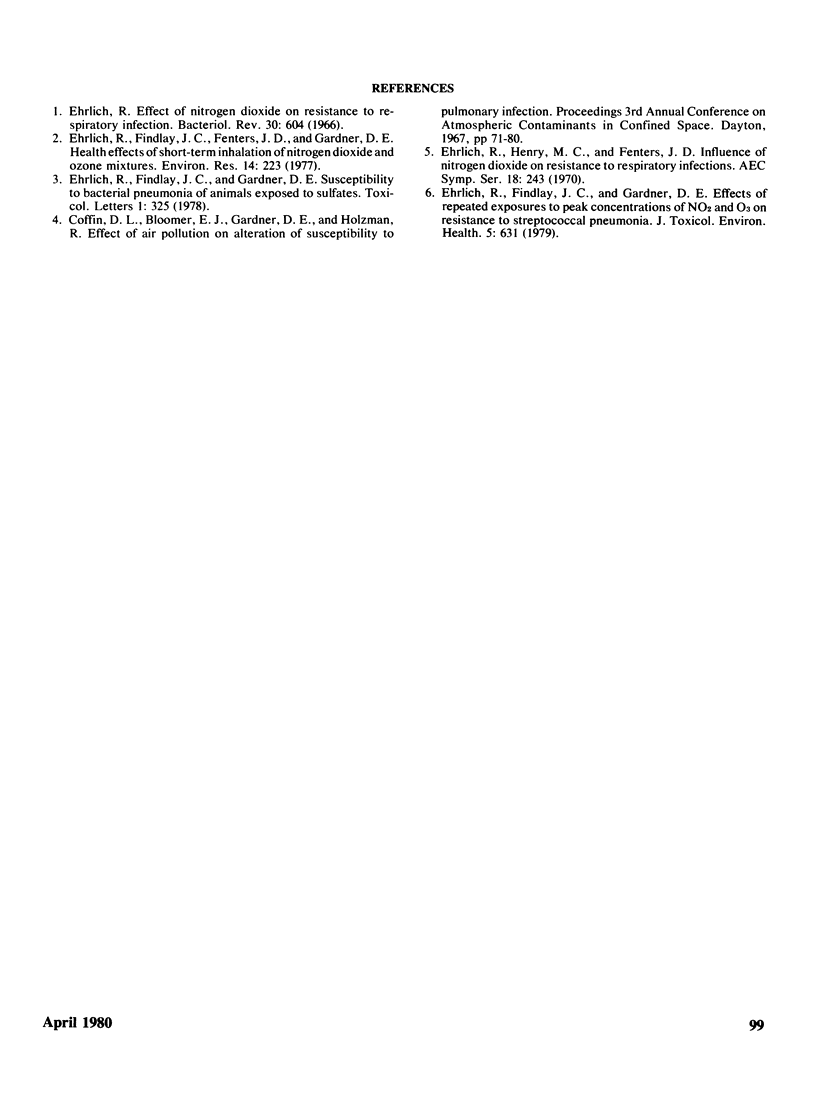
Selected References
These references are in PubMed. This may not be the complete list of references from this article.
- Ehrlich R. Effect of nitrogen dioxide on resistance to respiratory infection. Bacteriol Rev. 1966 Sep;30(3):604–614. doi: 10.1128/br.30.3.604-614.1966. [DOI] [PMC free article] [PubMed] [Google Scholar]
- Ehrlich R., Findlay J. C., Fenters J. D., Gardner D. E. Health effects of short-term inhalation of nitrogen dioxide and ozone mixtures. Environ Res. 1977 Oct;14(2):223–231. doi: 10.1016/0013-9351(77)90034-2. [DOI] [PubMed] [Google Scholar]
- Ehrlich R., Findlay J. C., Gardner D. E. Effects of repeated exposures to peak concentrations of nitrogen dioxide and ozone on resistance to streptococcal pneumonia. J Toxicol Environ Health. 1979 Jul;5(4):631–642. doi: 10.1080/15287397909529775. [DOI] [PubMed] [Google Scholar]


